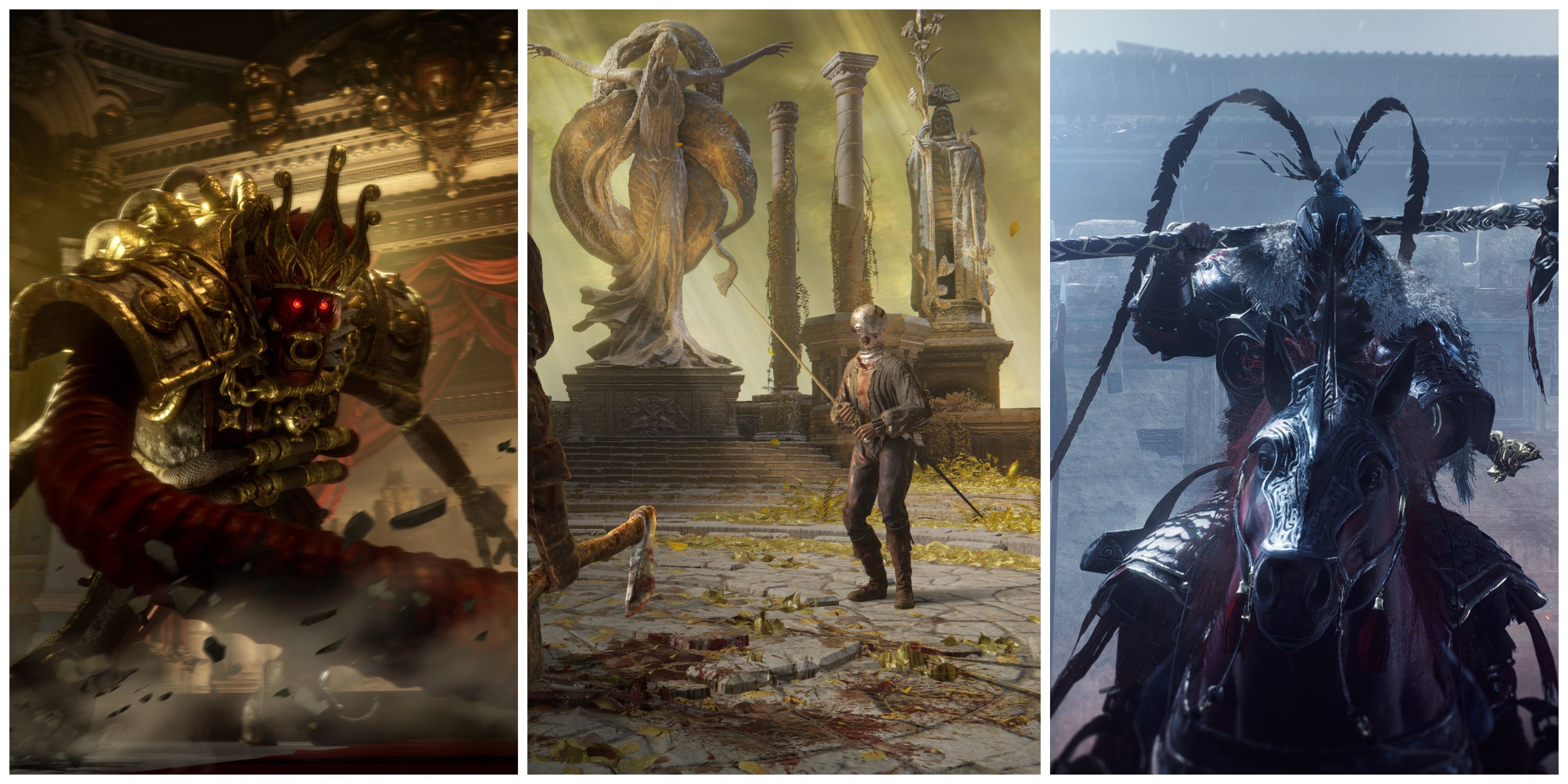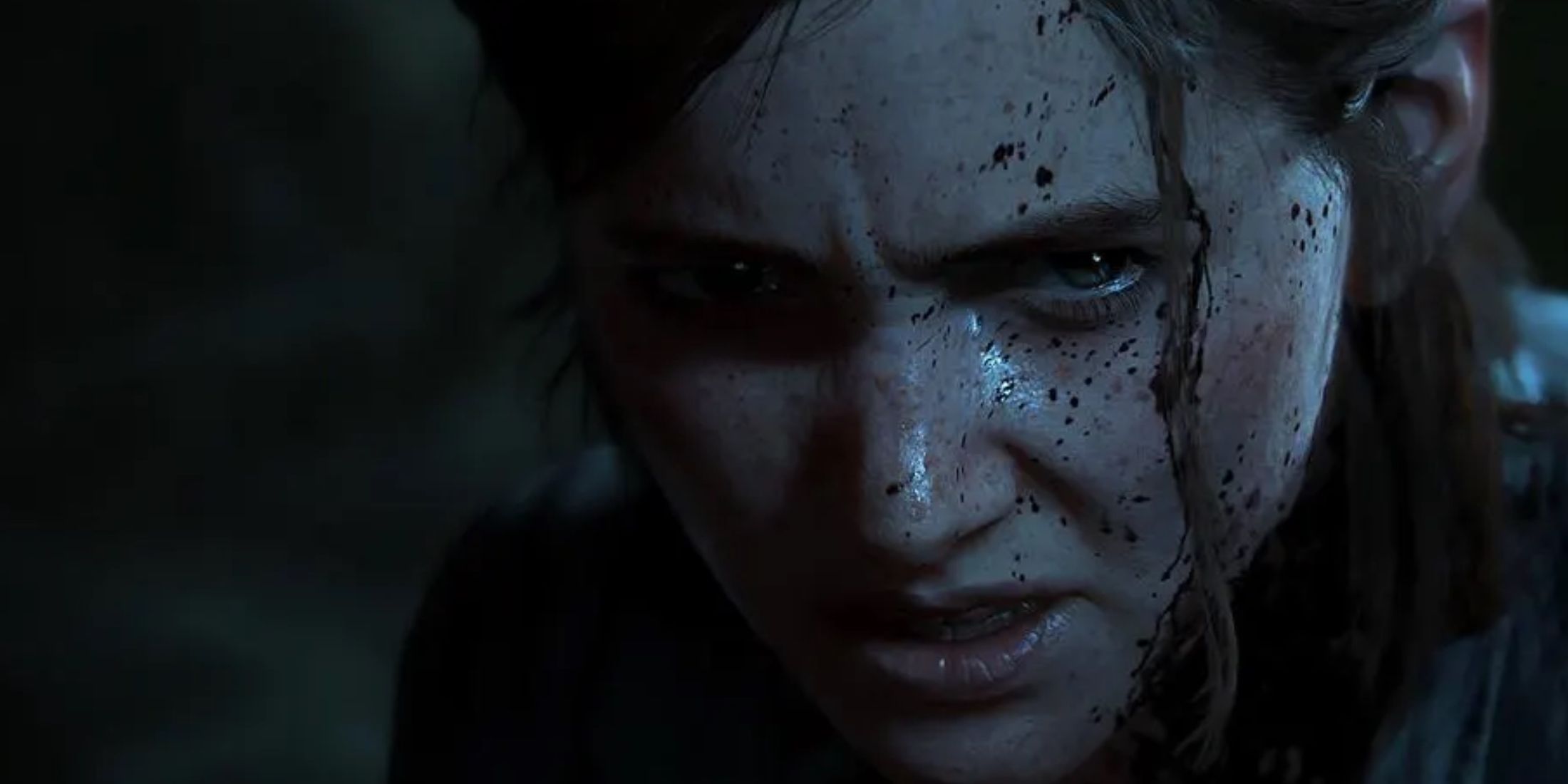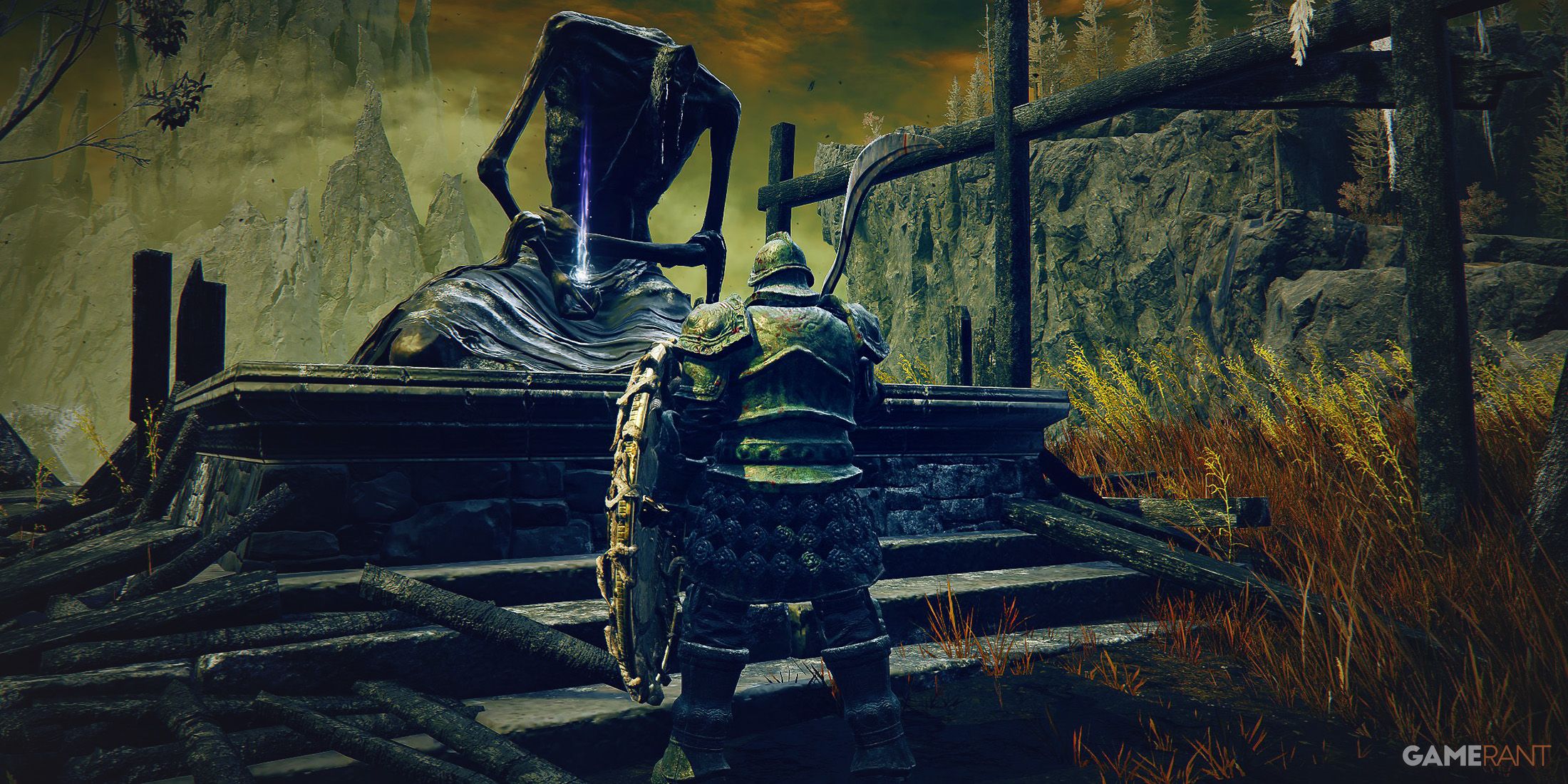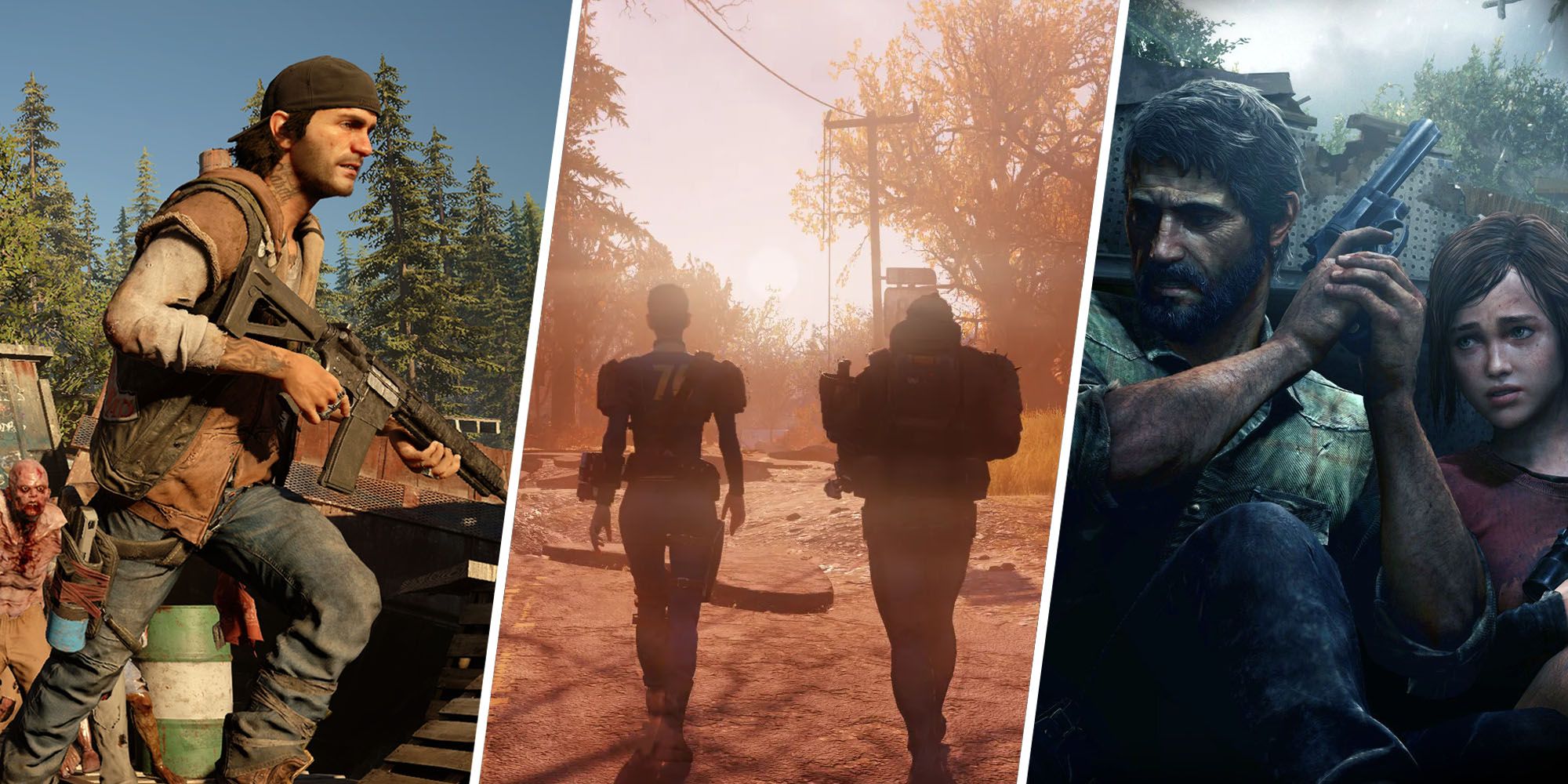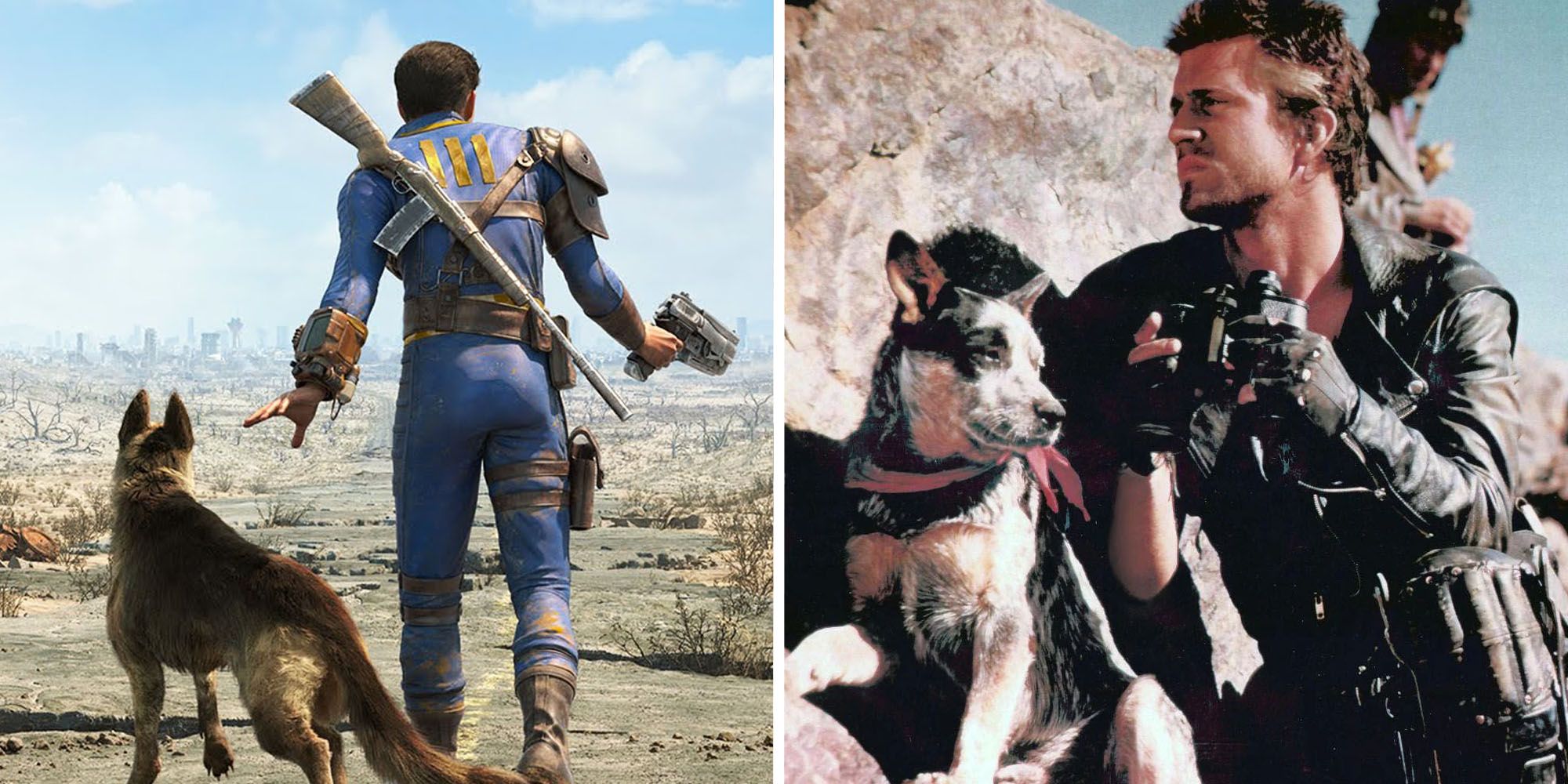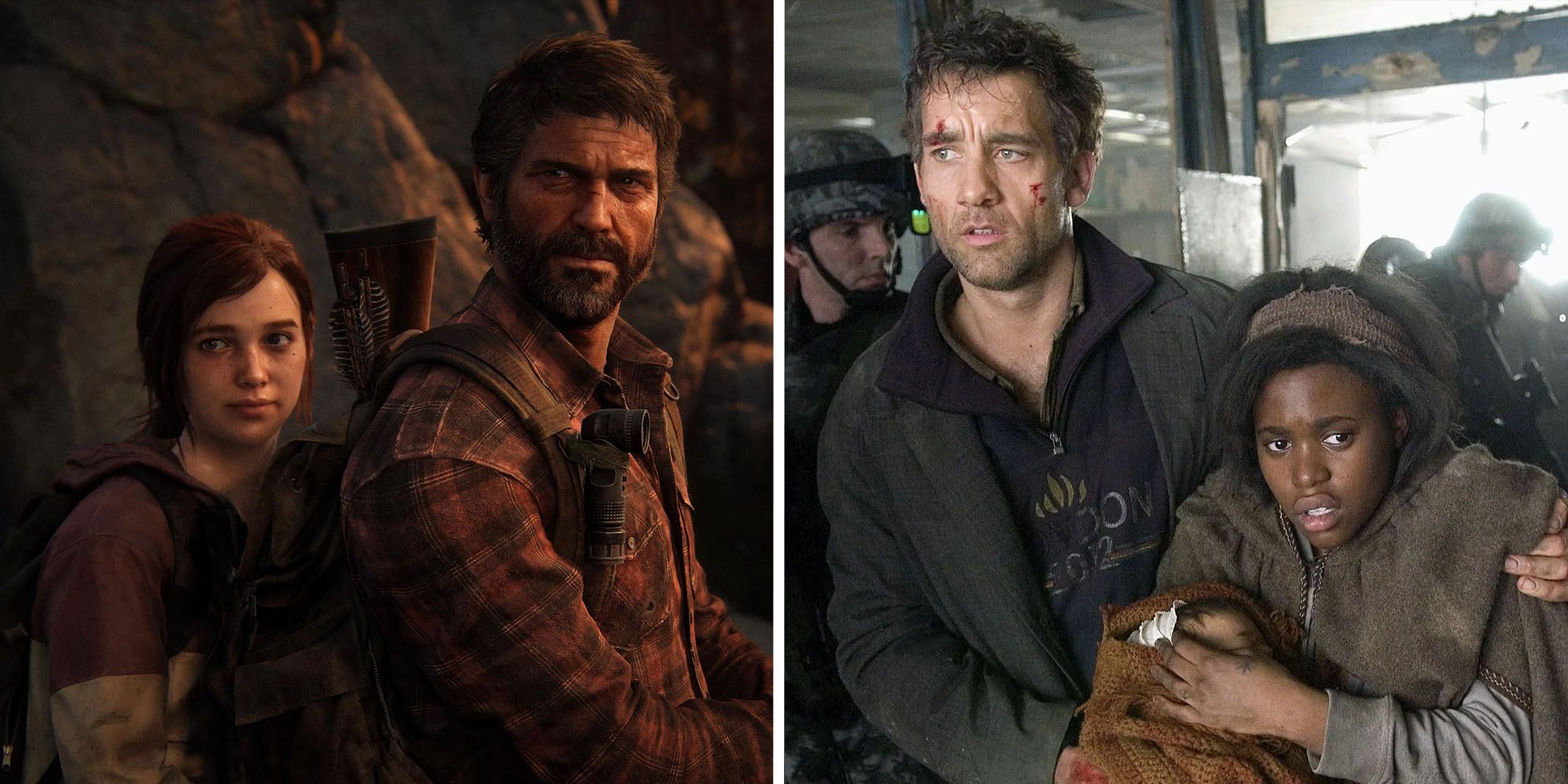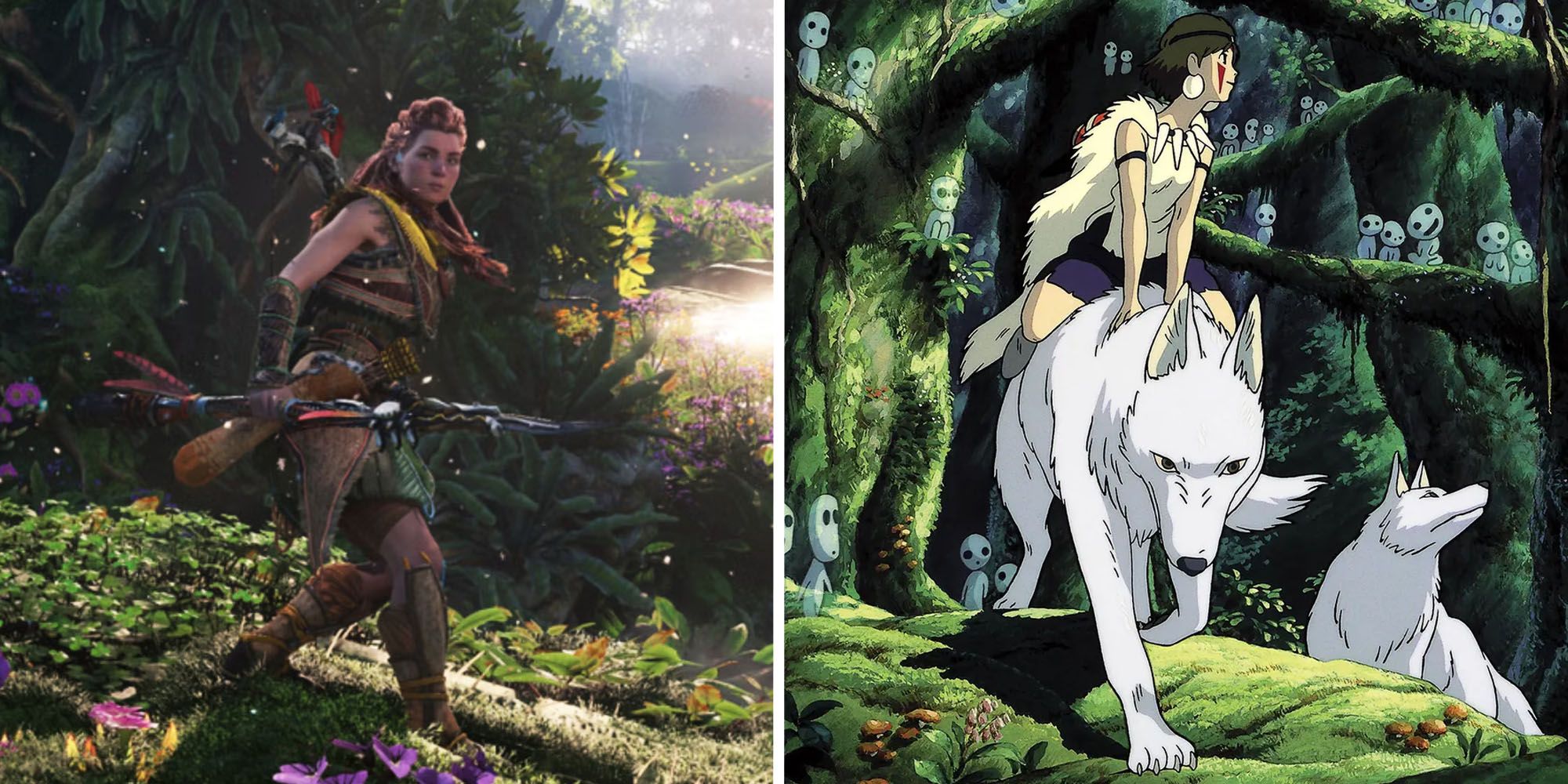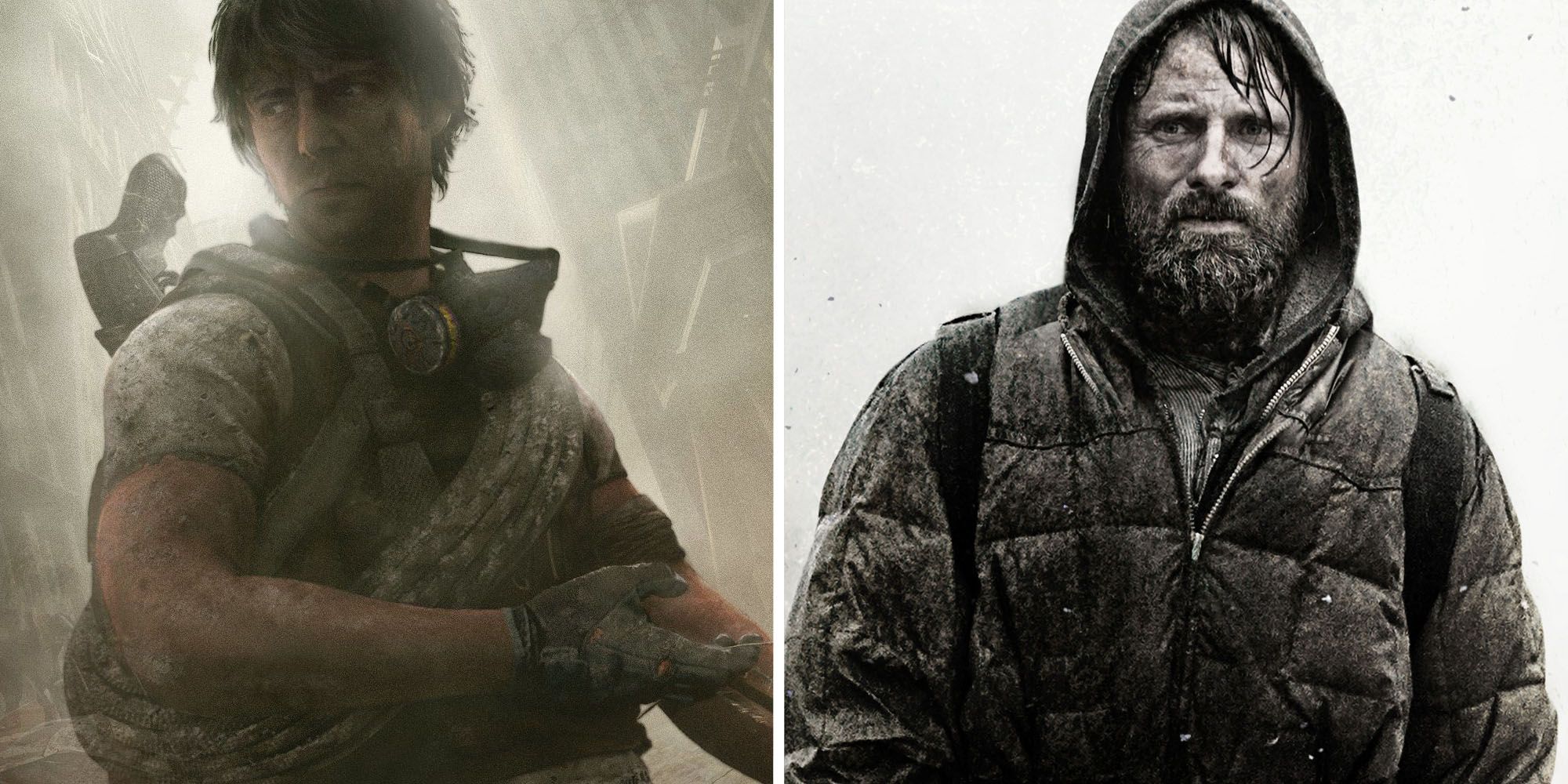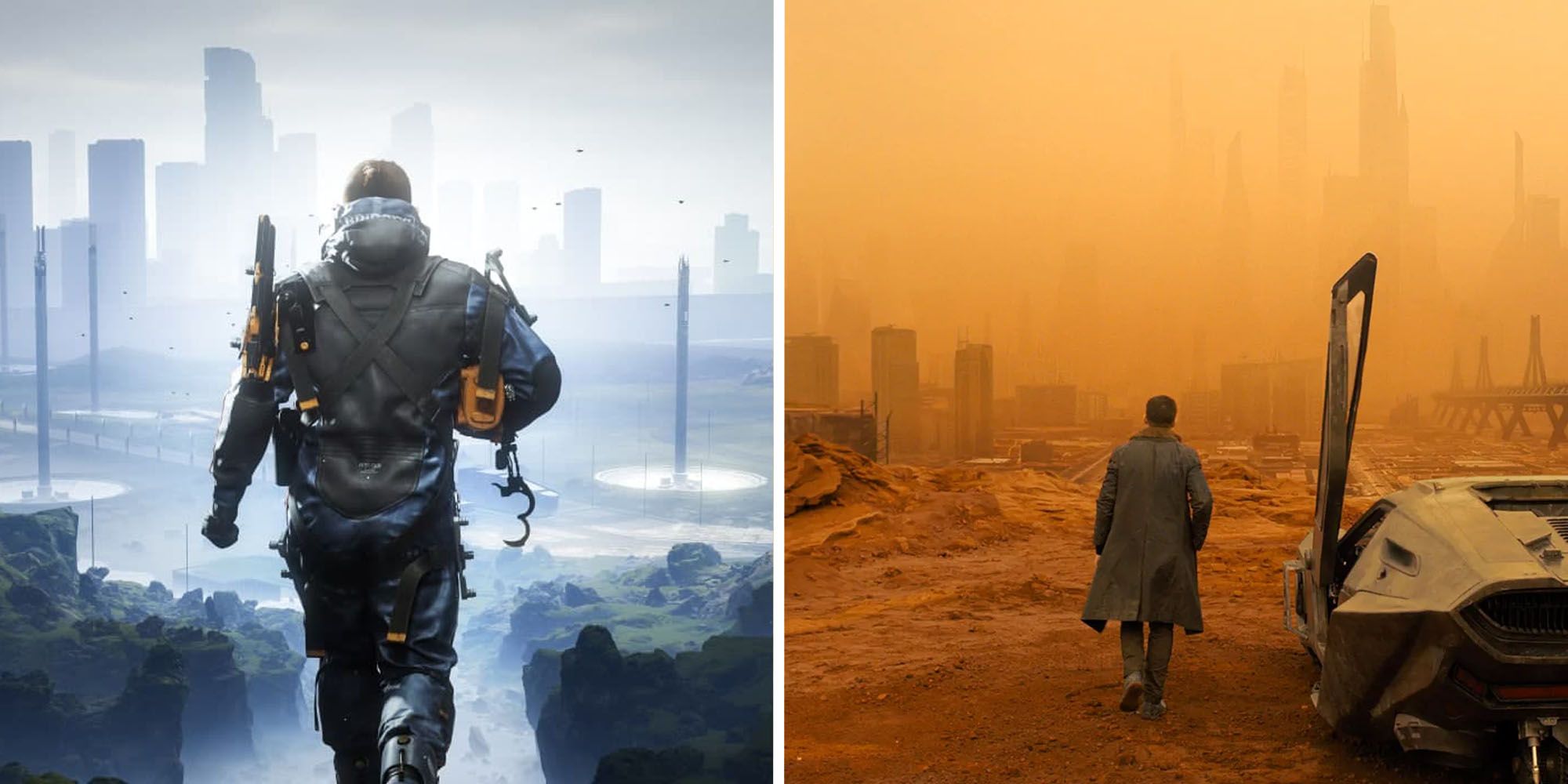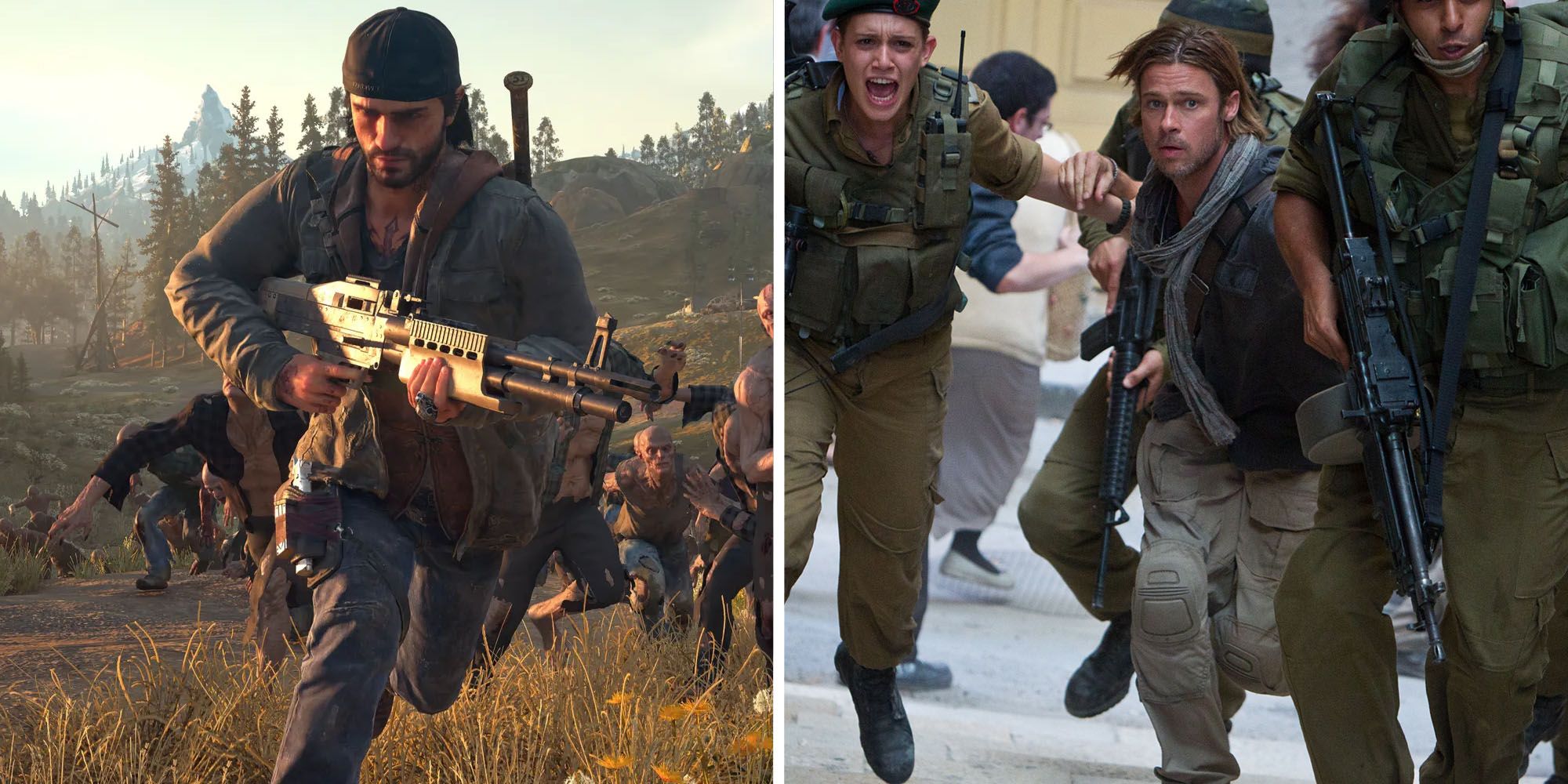The thought of an apocalypse is scary but equally fascinating. Thinking about how people would survive such a situation can cause an existential crisis when considering how the world could end. This is common for fans of post-apocalyptic games, all of which have plenty of original stories and ideas about what humanity’s eventual downfall will be.
But a lot of these games also draw inspiration from real life. Situations range from a deadly pandemic in The Last of Us, an automated military robot uprising and the subsequent environmental collapse in Horizon: Zero Dawn, or an all-out nuclear war in the Fallout series. The narrative themes and overall aesthetics of these games also draw inspiration from movies of the post-apocalyptic genre. Some are obvious, while others pay homage in different ways.
6 Fallout — Inspired By Mad Max
The Fallout games occur in the mid-22nd century in an alternate retro-futuristic world. Following World War II, atomic physics and nuclear fusion created technological advancement in Fallout’s universe. But as the world moves into the 21st century, an energy and resource crisis causes wars and the United Nations to collapse. This culminates with the Great War on October 23, 2077, in which nuclear destruction creates the post-apocalyptic wasteland Fallout players have become so accustomed to.
Among the many films that the Fallout series was inspired by, the Mad Max franchise was central to the game’s concept. Like Fallout, the post-apocalyptic Australia depicted in the franchise comes as a result of resource shortages and the resulting collapse of society. The Mad Max films follow former police officer Rockatansky (Mel Gibson), who becomes a loner wandering the Wasteland. Of all the Fallout games, Rockatansky’s solitary journey runs in closest parallel with Fallout 4, where gamers play the Lone Wanderer, who travels the Wasteland in search of answers about their family. In Mad Max 2, Rockatansky is accompanied by a dog, much like Dogmeat in Fallout 4.
5 The Last Of Us — Inspired By Children Of Men
In The Last of Us, the world is ravaged by a mutant strain of the Cordyceps fungus. The infection wipes out 60% of humanity, and those who survive face a rapidly declining social structure. Two decades after the start of the infection, most survivors live in cities under strict quarantine. These zones are overseen by the Federal Disaster Response Agency (FEDRA), which has become a totalitarian faction within the United States that imposes martial law.
Neil Druckmann, creative director of The Last of Us, cited the 2006 film Children of Men as a significant influence on the game during an interview with GamesBeat. Children of Men is an underrated dystopian movie starring Clive Owen as Theo Faron, a man who lost his child to a flu pandemic. The film takes place in 2027, during a time of complete infertility alongside war and a global financial depression. As a result, humanity faces extinction until Kee (Clare Hope-Ashitey), an asylum seeker, becomes the only pregnant woman in the world. Both Children of Men and The Last of Us center around the degradation of society, as well as hope in one person holding a cure.
4 Horizon: Forbidden West — Inspired By Princess Mononoke
Horizon: Zero Dawn introduced the importance of environmental storytelling in its narrative, expanding upon this further with Horizon: Forbidden West. From the red blight plaguing the lands, the supercell storms, and the contaminated water caused by a collapsing biosphere, Horizon: Forbidden West explores what can happen if changes in the climate are out of control.
Among the many influences Guerilla Games had during the production of Zero Dawn, its lead writer John Gonzalez told GamesBeat about the effect Studio Ghibli’s Princess Mononoke had on its production – particularly in terms of Aloy’s characterization. “She sort of arose out of the world we were developing. There was no one-for-one reference point. But certainly some things were influences,” he said, including “Nausicaa, Princess Mononoke, the Studio Ghibli heroines.” Both Aloy and Princess Mononoke’s San are outcasts and warriors raised in isolation, living in a world centered around environmental collapse.
3 I Am Alive — Inspired By The Road
I Am Alive is a 2012 survival game developed by Ubisoft Shanghai. Players take on the role of Adam Collins, a man who returns to his hometown a year after a series of devastating earthquakes that wipe out 90% of the human race. Like other dystopian games, the lack of resources after the event drives surviving humans to fend for themselves, often in violent ways.
When speaking of films that inspired the game, Ubisoft’s Aurélien Palasse told Gamespot in 2012 that the 2009 film The Road was a source the development team pulled from. “Post-disaster [in games] is often unrealistic, and I Am Alive is realistic,” Palasse said. “I think it’s different from all the other games we’ve seen: it’s more mature, everything is real.” Adam is influenced by Viggo Mortensen’s character in The Road, a father trying to survive with his son in a world after a catastrophe. The game and The Road have a similar tone and aesthetic, set in a bleak and destitute United States.
2 Death Stranding — Inspired By Blade Runner
Created by Hideo Kojima, Death Stranding takes its name from an event caused by creatures that come from the place between life and the afterlife. When these creatures, known as ‘Beached Things’ or ‘BTs,’ consume a human as food, they can cause an explosion (a “voidout”) with the same power as a nuclear bomb. The rain from these explosions, called “Timefall,” deteriorates everything it hits, leading to the dissolution of humankind. Those who have survived live in colonies that are supported by porters, people who deliver essential supplies and brave the lands where the BTs roam.
Of all the films that could have influenced Death Stranding, the Blade Runner films are an unexpected discovery. While the film does take place after a cataclysmic event (a nuclear war) and follows the dystopian society that forms from it, Death Stranding and Blade Runner aren’t obviously connected on the surface. But Kojima is a massive fan of the Blade Runner franchise. Looking closely, players can certainly see his love for the films through aspects like the architecture of the land, the colonies that inhabit it, and the futuristic technology used. “The rhythm of how it begins and all, that’s why it catches my eyes,” Kojima described his love of the film to Far Out Magazine. “It’s something that’s really indigestible in the beginning and stays with me.”
1 Days Gone — Inspired By World War Z
A different take on the zombie genre,Days Gone sees a biker gang tackle a horde of zombies known as Freakers as they ravage through Oregon following a viral pandemic. Days Gone was heavily inspired by World War Z, in addition to The Walking Dead and Sons of Anarchy. “At the time, around 2013, The Walking Dead was really popular, Sons of Anarchy was out, and even World War Z was out around that time,” Jeff Ross, director of Days Gone, told The Hollywood Reporter. “With all those inspirations spinning around in our brains, we realized we could do our own version of some of the best parts of all those things.”
In Days Gone, most of the story centers around finding a cure. While a cure is mentioned in The Walking Dead, th story derives mainly from World War Z. The film follows Gerry Lane (Brad Pitt), a former investigator with the United Nations who attempts to find a solution for the zombie pandemic plaguing the world.

